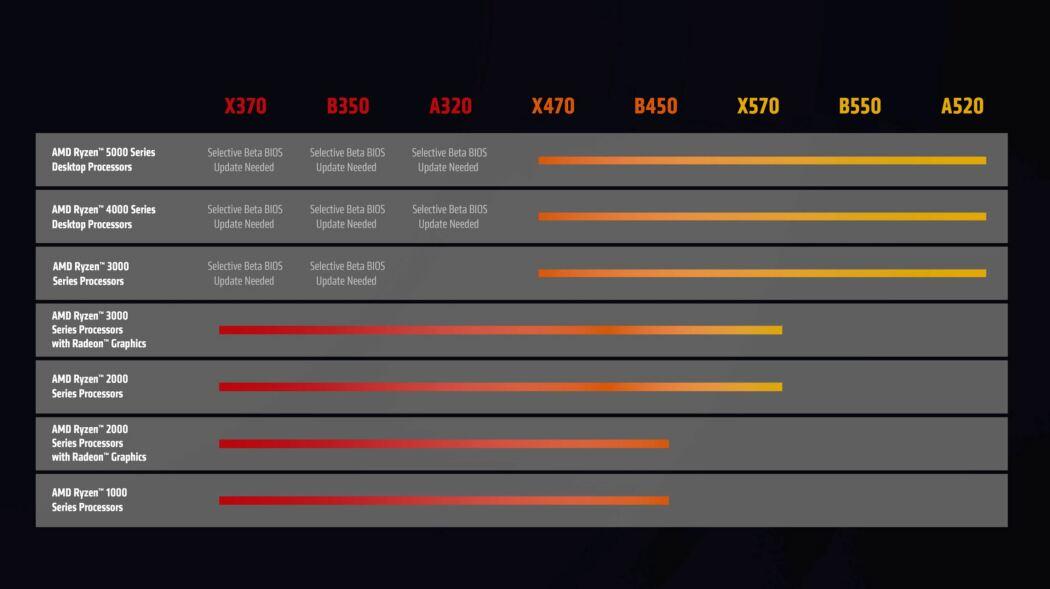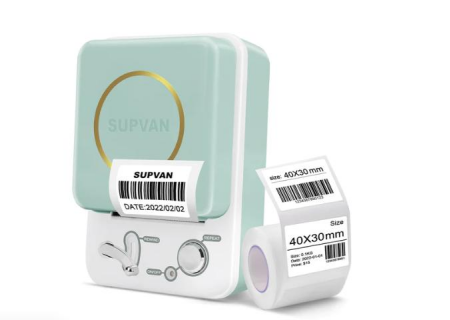AM4's Last Hurrah: AMD Unveils 7 New Ryzen 4000 and 5000 CPUs at Nice Prices
AMD’s AM4 socket platform has had a good run—it presided over the company's spectacular, phoenix-like ascent in desktop processors with the introduction of the first Ryzen family in 2017. But its time as a leading-edge platform is almost at an end. AMD has already announced that its AM5 platform will launch in the fall. But before that happens, AM4 gets one last star turn, and existing AM4 customers gain a retroactive upgrade path that we rarely see in the PC market nowadays.
Come April, AMD will ship seven new desktop CPUs, including what it claims will be its fastest AM4 gaming processor to date, the Ryzen 7 5800X3D. At the same time, AMD is pushing to make available BIOS updates for the oldest AM4 motherboards, enabling owners of original Ryzen systems to upgrade to new Ryzen 5000-series processors.
AMD Ryzen 7 5800X3D With 3D V-Cache
Putting prices aside for now, the most exciting new processor that AMD has coming in April will be the new Ryzen 7 5800X3D. AMD announced this chip back during CES 2022, but it’s only now that we are getting hard details about its release and price. The Ryzen 7 5800X3D contains eight "Zen 3"-derived CPU cores with SMT support. The cores are clocked at 3.4GHz, and they boost up to 4.5GHz under the right conditions.
Clock for clock, this makes the Ryzen 7 5800X3D slightly slower than the company's Ryzen 7 5800X that launched back in 2020. The difference, though? The new chip is the first processor to use AMD’s 3D V-Cache technology. The Ryzen 7 5800X3D has an enormous 96MB pool of L3 cache, versus the Ryzen 7 5800X’s 32MB of L3.
Depending on the workload, this cache boost could give the Ryzen 7 5800X3D an advantage even though it’s clocked slightly lower. That’s why AMD is targeting the Ryzen 7 5800X3D as a gaming chip, as games typically respond strongly to changes in cache size.
The original Ryzen 7 5800X(Photo: Zlata Ivleva)The Ryzen 7 5800X3D is priced to match the Ryzen 7 5800X at $449, and it’s set to launch on April 20. More about this chip when we get a sample in-house to test.
The AMD Ryzen 5000 Refresh: Undercutting Some Ryzen Classics
AMD also has plans to refresh its existing AMD Ryzen 4000 and Ryzen 5000 product lines with a half-dozen new CPUs. This isn’t quite what we would call a real refresh, as that usually entails updated chips across a full product line, and that’s not what's happening here. Instead, of the six new CPUs, AMD has crafted three each in the Ryzen 4000 and Ryzen 5000 product lines. No 3D V-Cache is in play here, but these are still some interesting new processors.
The new Ryzen 5000 CPUs are (from high end to low) the Ryzen 7 5700X, the Ryzen 5 5600, and the Ryzen 5 5500. All of these are built on the Zen 3 architecture and are similar to existing processors in the 5000 series. Gauging by their specs, though, they appear to offer better value.

The top new chip is the Ryzen 7 5700X. It is virtually identical to AMD’s Ryzen 7 5800X, which launched back in 2020 at a price of $449. Both chips have the same number of cores and the same amount of cache. The Ryzen 7 5700X will likely be marginally slower than the 5800X, as its base clock is 400MHz lower and its turbo is a mere 100MHz lower. But at the same time, the Ryzen 7 5700X is far more affordable, at $299. We’ve not tested the Ryzen 7 5700X yet, but the on-paper specs suggest there's no way you would see $150 worth of added performance in the older 5800X from that negligible difference in clock speed.
The new Ryzen 5 5600 is another undercutter, taking the heat to the Ryzen 5 5600X. Again, both of these chips are identical in terms of core count and nearly the same amount of cache (31MB on 5600 vs 32MB on 5600X) with the only notable difference being a 200MHz advantage in clock speed on the Ryzen 5 5600X. The difference in price here is $100, with the Ryzen 5 5600X retailing for $299 and the Ryzen 5 5600 at just $199, which could make it a much better buy.
Things are a bit different for the Ryzen 5 5500, as it appears to have started life as an APU. The Ryzen 5 5500 has six CPU cores with SMT technology clocked at 3.6GHz with a 4.2GHz turbo. This is similar to the other two Ryzen 5 5000 CPUs mentioned above, but it differs significantly in the cache department, which has been cut down to a mere 16MB of L3 cache.
To date, the only Ryzen 5 5000-series processors to have just 16MB of L3 cache have been AMD’s Ryzen 5 5000-series "G" processors with graphics, which points to the likelihood that the Ryzen 5 5500 is one of these chips with a disabled graphics core. Another dead giveaway here is that the Ryzen 5 5500 doesn’t support PCI Express 4.0; instead, it’s limited to PCI Express 3.0, just like AMD’s 5000-series processors with graphics. For these trade-offs, the Ryzen 5 5500 costs only $159, making for a tasty-looking current-generation budget chip for shoppers who own a decent discrete graphics card.
AMD Ryzen 4000 Refresh: Low-End Processors Get Some Love
One of the more exciting new processors that AMD announced is actually an old one...sort of! The Ryzen 5 4600G has an integrated graphics processor (IGP) built into it, which is based on AMD’s Radeon RX Vega graphics technology.
This "new" CPU contains six SMT-enabled cores clocked at 3.7GHz with a turbo speed of 4.2GHz, and the IGP portion of the chip has 448 cores clocked at 1,900MHz. Together, this should make it a fairly capable low-end gaming solution. With graphics cards still selling for a painful premium these days, and AMD’s other processors with graphics often selling for well above MSRP, too, this chip is likely to garner considerable attention.
The reason we called it out as an old chip? Technically, it launched back in 2020, but up until now, it has only been available in pre-built OEM systems. Now it'll be available to PC builders and upgraders at an attractive $154, which could be very enticing if a new video card has evaded your grasp for some time.
AMD confirmed to us that the last two new CPUs that it announced—the Ryzen 3 4100 and the Ryzen 5 4500—are essentially cut-down variants of the Ryzen 5 4600G minus the IGP. Just like with the Ryzen 5 5500, we suspected this was the case due to the reduced cache sizes on these two chips. AMD confirmed to us that these chips both have 4MB of L3 cache for each set of four cores, and that the chips have disabled the integrated graphics hardware.
Both of these chips arrive in an awkward position in the market, almost a reversal of the position of the Ryzen 7 5800X3D. Whereas the Ryzen 7 5800X3D has an enormous pool of L3 cache to offset its slightly lower clock speeds, the Ryzen 3 4100 and Ryzen 5 4500 are at a significant disadvantage versus their closest existing AMD counterparts.
Ripper Redux! AMD Tips 'Zen 3'-Based Threadripper Pro Workstation CPUsAMD Ryzen 6000 Mobile CPU Benchmarked: The Bronze Medal Ain't BadConsole Demand Pushes AMD to Highest x86 Chip Market Share EverTake the Ryzen 5 4500, for example. It has the same number of cores as the Ryzen 5 3600, and both chips are based on the Zen 2 architecture with SMT support to double the number of threads they can handle. The Ryzen 5 4500 is clocked a negligible amount slower than the Ryzen 5 3600, which by itself shouldn’t make too much of an impact. But the Ryzen 5 4500 also has just 8MB of L3 cache compared to the Ryzen 5 3600’s 32MB of L3 cache, and that’s going to make a much bigger difference in many tests. Still, there looks to be some value in the Ryzen 5 4500 on the pricing front, as it's considerably lower at just $129 for a six-core processor. (The Ryzen 5 3600 launched at $199.)
The Ryzen 3 4100, however, may not have a leg to stand on. Its on-paper specs are outclassed by those of the Ryzen 3 3100. Both of these chips have four CPU cores and SMT support, but where the Ryzen 3 3100 has 16MB of L3 cache, the Ryzen 3 4100 has just 4MB of L3 cache. (The Ryzen 3 4100’s 100MHz advantage in clock speed isn’t going to make up for that.) Both of these chips are priced at $99, which removes any real reason to buy the Ryzen 3 4100 if the Ryzen 3 3100 is available.
But that "if" may be the key to this whole dynamic. The Ryzen 3 3100 and 3300X have been hard to find for more than a year, and even when you could find one, they have been seldom at anything close to list price. If the Ryzen 3 4100 and the Ryzen 5 4500 can hold the line on price in 2022, those chips could be a win for AMD right there on that basis alone.
An AMD 300-Series Motherboard Update: Retro Ryzen
Along with all of these new CPUs, AMD announced one other bit of news that could make upgrading CPUs a less painful experience for many current owners of AMD AM4 systems. Support for AMD's Ryzen 5000-series processors has been officially extended to motherboards equipped with AMD 300-series chipsets.
This means you can now take a relatively old board with a Ryzen X370 or B350 chipset, update the BIOS, and throw on the new Ryzen 7 5800X3D when it launches, or one of the new cheap 5000-series chips. The nuances are outlined below.
AMD’s 300-series chipset motherboards first launched all the way back in 2017, alongside the original Zen-based Ryzen processors. This does require the BIOS to be updated to work, of course, usually with an existing older/supported chip installed first. And it's doubtful that AMD’s board partners will update absolutely every 300-series motherboard.
But even if they just update a few, it's great to see some new life breathed into these old boards. It’s rare these days to be able to upgrade a five-year-old platform with a brand-new processor like this. (Compare Intel's recent cadences on desktop CPU platforms, with a whole new and incompatible socket every other generation.)
All of the new CPUs that AMD announced, apart from the Ryzen 7 5800X3D, will officially launch on April 4. As noted earlier, the Ryzen 7 5800X3D will trail these new processors and launch on April 20. The new BIOS updates are expected to launch sometime during April, as well, but the exact timing may vary board to board and will likely depend on the individual motherboard OEMs.
Sign up for What's New Now to get our top stories delivered to your inbox every morning.
EmailThis newsletter may contain advertising, deals, or affiliate links. Subscribing to a newsletter indicates your consent to our Terms of Use and Privacy Policy. You may unsubscribe from the newsletters at any time.
Thanks for signing up!Your subscription has been confirmed. Keep an eye on your inbox!








